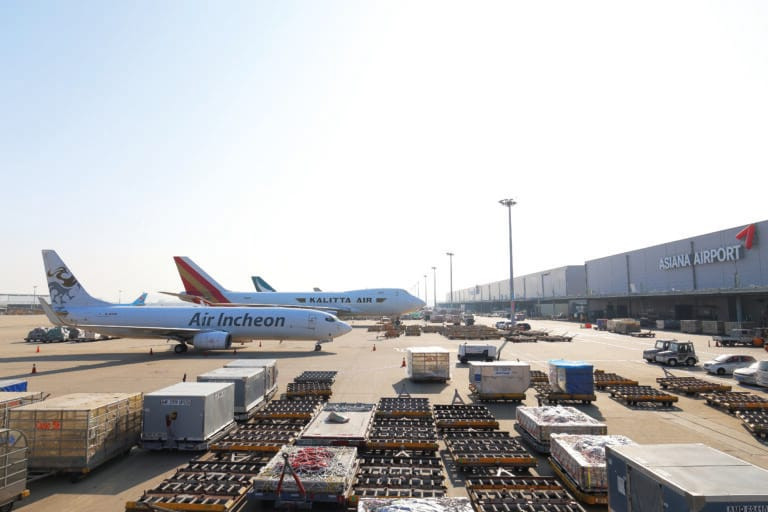Historically a bridge between the United States and Asia, Incheon Airport is responding to the shifting sands of global trade. Political tension between the U.S. and China has created ripples in long-established cargo routes, prompting Incheon to rethink its network and growth.
“Because of the political dispute between the U.S. and China, we expect that there will be a little bit of difficulty between these two routes,” explains Hoon Lim, deputy director at Incheon International Airport Corporation. “We think we need to diversify our aviation routes. Until now, we connect almost 200 cities directly… but we want to increase more capacity to Europe and emerging markets such as South America, India, or maybe Africa.”
This realignment isn’t just about expanding geographic reach. It’s also a strategic response to market maturity.“ Korea is somewhat close to a very stabilised market, so Korea is not fast-growing in terms of economy,” Lim notes. “It means that overall export and import powers cannot grow that fast like 10 or 20 years ago. So we need to find our potential in terms of geography and also geopolitics.”
Part of this strategy involves bringing in new airline partners. As part of the ongoing shift in global supply chains, the part of the supply chain that originally started in China is now shifting to Southeast Asia and India. However, unlike China, direct cargo flights from Southeast Asia and India to the U.S. are not feasible due to distance. As a result, many airlines, including CMA-CGM and Cargolux, have been using ICN as a transhipment hub for their freighters to and from Southeast Asia.
In this context, Incheon is committed to ensuring that more cargo airlines can conveniently use Incheon. To support this, Incheon has expanded its hourly slots to 75 starting in 2024, with priority given to cargo flights. Additionally, cargo airlines such as National Air and Atlas Air have requested a reduction in the deadline for applying for charter cargo flights at Incheon.
“Changing government regulations is not an easy task, but we plan to actively engage in discussions with the South Korean government to resolve the airlines’ difficulties,” Lim stated.
Why foreign investment and cargo partnerships matter
A critical piece of Incheon Airport’s growth plan is its Free Trade Zone, a sprawling 3.2 million sq m area dedicated heavily to cargo operations. Nearly half of this space is focused on logistics, and it’s where the airport hopes to attract significant foreign investment.
“Cargo is the growing engine of our airport,” Lim states firmly. “If we break down the cargo at Incheon Airport, transit cargos occupy almost 50 percent of our international cargo. That is our key growth driver — to attract more transhipment cargo.”
To achieve that, Incheon is focusing on expanding warehouse capacity with a clear strategy: “We call it a distribution centre. Our goal is to attract more warehouses that can function as a distribution centre so we can attract more cargo catered to Incheon Airport and distribute it to all of the world.”
Lim emphasises that collaboration with government and private partners is crucial for these ambitions. “Cooperation with not only private entities but the government is very important. The government is responsible for the overall regulations of the Free Trade Zone,” he says. “And there’s no warehouse owned by ourselves. This is all private investment. So we want to invite more.”
Korea’s next-gen cargo terminal
Looking beyond immediate demand, Incheon is embracing innovation through the development of a new smart cargo terminal, a bold step towards automation and long-term sustainability.
“Nowadays, the main method to handle cargo is by manpower — not automated machines or robots,” Lim explains. “So we are going to adopt many automated machines and robots in the process of handling the cargo.”
The project is currently in its partner selection phase, with operations slated to begin around 2027. Lim says the team sees this as a testbed that could shape future infrastructure across the airport.
“Even if this is not effective enough, we hope and think that this is the way we have to go,” he says.
“So we plan to redevelop some part of our cargo terminal to a smart cargo terminal.”
This vision is not limited to a single facility. “We also have some plan to enlarge and make it much larger — maybe near the empty land,” Lim notes, referring to adjacent plots being evaluated for expansion.
Multimodal and specialised
e-commerce has long been the airport’s fastest-growing cargo segment.
“Until the last month, e-commerce cargo was our key growth driver,” Lim reveals. “We handled about 700,000 tons of cargo between Incheon and the United States. Our estimation is about 40 percent of that was e-commerce.”
But recent U.S. policy changes have prompted Incheon to look to other high-value, specialised segments.
“We need to develop new cargo sectors,” he says. “One potential item is temperature-controlled items. Another is semiconductors.”
Given Korea’s central location between tech powerhouses Japan and Taiwan, and its own domestic manufacturing giants like Samsung and Hynix, Lim sees real opportunity: “We can function as a hub for semiconductor industries.”
Equally important is Incheon’s multimodal strategy, where sea, rail, and road transport intersect with airfreight. “Almost 5 percent of total cargo at Incheon Airport is multimodal logistics,” Lim shares. “For example, more than 120,000 tons of cargo has been transferred from China by sea and then transported to other countries by air.”
This model has proven so effective that it’s now being considered for other nearby regions. “We want to develop multimodal routes not only with China but also with Japan,” Lim explains. “Especially in Kyushu, where there are semiconductor manufacturing companies, that could be a very good way to attract more cargo.”
Looking further ahead, Lim even sees potential with Russia, Mongolia, and a unified Korea. “Someday, we are connected directly to the mainland and Russia through inland transportation,” he says. “So it will be — someday.”



